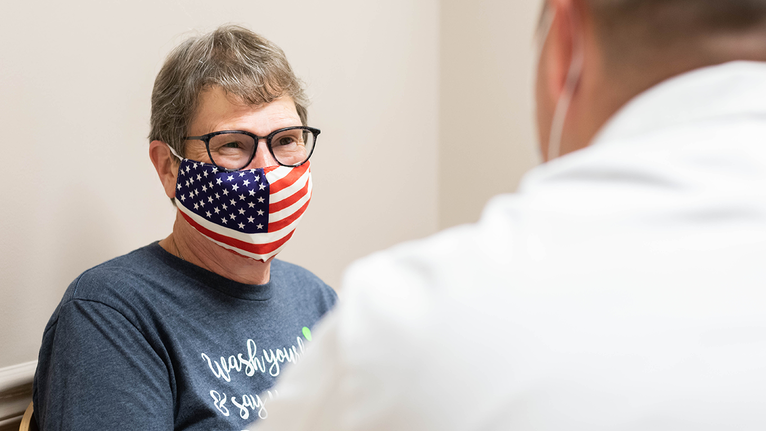“My grandmother, my aunt and one of my cousins all passed away from pancreatic cancer. Additionally, my brother had Barrett’s esophagus, which is associated with an increased risk of developing esophageal cancer,” said Virginia. “I immediately took note of my symptoms because of my family history.”
She was due for a routine colonoscopy and decided to have an endoscopy at the same time.
An endoscopy is a procedure to look inside the body using an endoscope (a flexible tube with a light and camera attached to it), which allows the doctor to view pictures of the esophagus, stomach and duodenum (part of the small intestine) on a color TV monitor.
The endoscopy — performed at a medical facility outside of Cincinnati — revealed a large duodenal polyp. The medical team unsuccessfully tried to remove the polyp during the endoscopy, so Virginia was scheduled for an open resection procedure. Typically, the duodenum and head of the pancreas needs to be removed if the polyp can’t be removed on its own. This would also occur if there is a chance that the polyp is cancerous.
“I ended up having surgery to remove the polyp, and it was a horrible recovery,” said Virginia. “I ended up with a hernia and a 12-inch incision scar, but at least the polyp was gone — or so I thought.”
Last year, Virginia experienced pain from her hernia, and her doctor set her up for another endoscopy. Sure enough, the polyp had grown back. They again tried to remove the polyp, but it was too large to remove with the scope through the esophagus. “I was extremely upset,” said Virginia. “I didn’t want to go through another painful surgery, and I was worried that I might have to have my pancreas removed, which would make me become an insulin-dependent diabetic.”
Virginia was referred to Rose Danielson, MD, UC Health physician and assistant professor of clinical medicine in the Department of Internal Medicine at the University of Cincinnati College of Medicine, who specializes in gastroenterology and advanced endoscopic skills.
Dr. Danielson ordered another endoscopy and, based on those results, referred Virginia to Gregory C. Wilson, MD, UC Health cancer surgeon in the Division of Surgical Oncology and assistant professor in the Department of Surgery at the UC College of Medicine.
“Virginia and I discussed having a resection to remove the polyp, which, given its location, could only be completely removed by taking the duodenum out using the Whipple procedure,” Dr. Wilson explained. “These polyps can be tough. They’re not cancerous, but the polyps are a sign of precancerous lesions. I reassured Virginia by taking the time to talk with her about the plan and making sure to address any concerns she had.”


